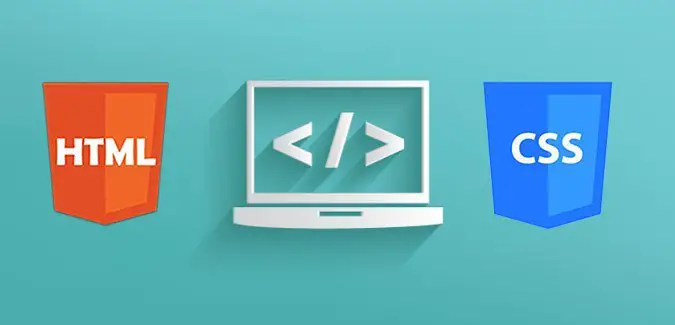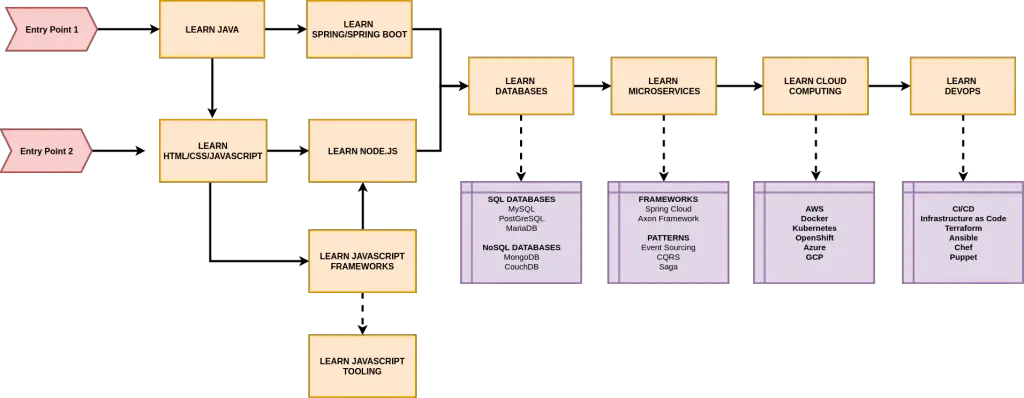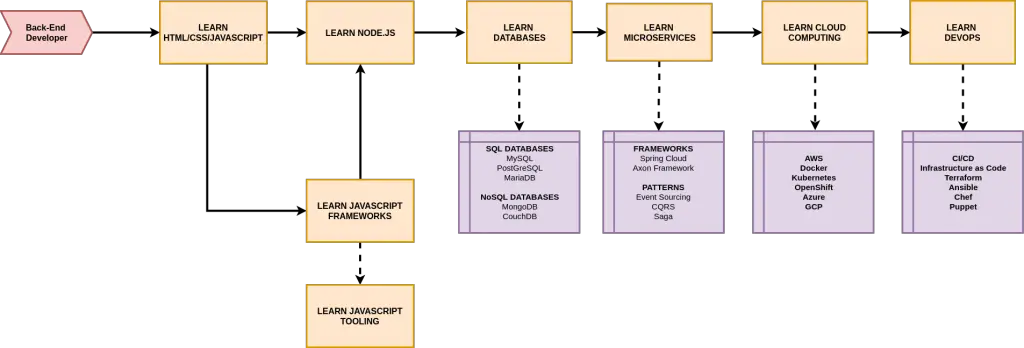To become a professional full stack developer, you need to know a lot of things. As the name suggests, a full stack developer should have good knowledge on my different technologies and programming languages.
Note that I am using the word good and not mastery. While no one will stop you from building mastery as full stack developer, often it is unrealistic to expect a full stack developer to be a master in all things. Most of the time, a professional full stack developer will have mastery over a few programming languages depending on his/her background. But a more broad knowledge over the rest of the topics.

And, by the way, that’s perfectly fine. More often than not, a professional full stack developer is expected to have a big picture view of things that go in a typical software development shop. Often, these developers will work with specialized teams and will also act as a glue between developers having different skill-sets.
Having said that, anyone can become a professional full stack developer. With the right amount of hard-word and dedication, of course. However, more importantly by following the right path.
In this post, I am going to help you find your path to become a professional full stack developer.
But before that, let’s understand what is a full stack developer?
What is a Full Stack Developer?

Depending on the perspective, the above definition can differ a bit. However, this is the general standard I prefer to use when defining a professional full stack developer.
And frankly speaking, it comprises of a lot of things. In other words, if you are full stack developer, you can build an entire application having front-end, back-end, databases and also manage your servers and so on. Basically, you have complete control of the life-cycle of the application.
No wonder why professional full stack developers are high in demand are also paid higher salaries than the normal levels.
Skills Needed to become a Full Stack Developer
Now that we have defined what is a full stack developer, it is time to look into the skills required for full stack development.
We will start with the most important and also the most basic skills.
1 - HTML & CSS

HTML or Hyper Text Markup Language is the basically the backbone of the world wide web. Every page you see while surfing the internet has HTML involved. HTML provides structure to your pages.
CSS or Cascading Style Sheets supplements HTML by controlling how a page should appear. CSS is mainly used for setting the colors, backgrounds and appearance of the page. Without CSS, building web pages can become almost impossible.
If you want to even think about becoming a professional full stack developer, you need to know HTML & CSS.
2 - Javascript
While HTML and CSS together help in defining how a web page should look line, Javascript adds life to those pages. Javascript allows you to make your web pages interactive and is really essential to make fully featured web applications.
Browsers understand Javascript and even though you may be using advanced languages such as Typescript, at the end everything gets transpiled to Javascript.
With frameworks such as Node.js, Javascript has pervaded the world of back-end development as well.
Knowledge about Javascript is pretty much essential to become a professional full stack developer.
3 - Backend Microservices
Coming to the back-end technology stack, the trend has increasingly moved towards building microservices.
While microservices is not a totally new concept, it is the widespread adoption that has made it an indispensable skill to learn about.

Microservices can be built using various programming languages such as:
- Java
- Python
- Javascript using Node.js
- Ruby
- C#
- and a few more…
Depending on your choice and comfort level, you can pick the most relevant and start with it.
4 - Cloud Computing
Cloud Computing is where the money is flowing now. Gone are the days of traditional servers being hosted on-premise. Most of the organizations are moving their workloads to the Cloud or are on contemplating on doing so.
As a professional full stack developer you should definitely know about cloud technology. Preferably, you should be comfortable with one or more cloud platforms.
Knowledge about cloud platforms will allow you to manage your servers and run-time environments for applications. It will also greatly increase your demand in the market.
5 - Databases
Databases are probably the most important part of an application. And yet, they are also the most overlooked ones usually. In most of the bigger organizations, there would be a team of Database Administrators taking care of the databases.
However, that’s not the case now with development teams expected to know more about running databases.
A professional full stack developer should definitely know a lot more about databases and their different types.
Primarily, there are the SQL and the NoSQL databases and of late, the popularity of NoSQL databases have also increased manifold. Then, there are other types as well such as Graph databases.
6 - DevOps
DevOps is gaining a lot of traction in the industry especially with the advent of cloud computing. As development teams maintain and run their own infrastructure, DevOps plays a key role in bridging the gap between development and operations.
As expected, a professional full stack developer is right in the middle of the action.
Provisioning infrastructure using Infrastructure as Code tools, managing configurations, handling deployments and CI/CD processes are just some of the tasks a full stack developer should know about.
Learning Paths
At Progressive Coder, my goal is to provide you with learning paths to become a professional full stack developer.
For this purpose, I have compiled a list of steps depending on where you are in the journey.
Beginner Journey
If you are a complete beginner, you have multiple options to start learning full stack development.
The below illustration offers a glimpse into the possibilities.

Let’s look at the various tracks:
Entry-Point 1
The first entry point is by learning a general purpose programming language like Java and moving onto Java frameworks such as Spring and Spring Boot.
The advantage of this approach is that Java can help you improve on Object Oriented Concepts that are used by many programming languages. Moreover, Java itself is an extremely popular language and heavily used in large organizations all over the world. Basically, you will not regret learning it.
Advanced Java frameworks such as Spring and Spring Boot are great stepping stones for getting into microservices architecture. You learn a lot of cool concepts like Inversion of Control, Dependency Injection, Aspect Oriented Programming.
At Progressive Coder, I have compiled extensive resources to help you learn Spring framework and Spring Boot in particular. Click below button to start with the same.
You can continue further on the path and become a back-end expert by learning microservices architecture and frameworks.
Next, you can learn about Cloud Computing and start with the more popular cloud platforms out there.
Entry Point 2
The second entry point you can take as a beginner is to start with HTML/CSS/Javascript. This is basically the front-end development stack.
After that, you can move to more advanced Javascript frameworks such as React or Angular. I would strongly recommend this approach since it would almost make sure that you are front-end web developer. It is a nice feather in the cap!
However, if you already have some knowledge about them, you can move onto NodeJS and continue towards the back-end development stack.
At this point, you can also choose to learn Java as we discussed in first entry point. In my view, if you have enough time, try to learn both NodeJS and Java. It will help you appreciate software development better. However, if you are short of time, just continue with NodeJS.
From this point onwards, you can continue with other topics.
Experienced Developer Journey
You maybe already an experienced developer working either on the front-end stack or the back-end stack. And you want to become a professional full stack developer. Definitely, it is a great career choice.
Front-End Developer to Full Stack Developer
As a front end developer aspiring to be full stack developer, you can again take a couple of paths depending on your current priorities or work expectations.
The below illustration can help you figure out your learning path.

Basically, you don’t have to learn the basics of web development. However, you can decide to go with the Java stack or go with NodeJS. If you are already a proficient Javascript developer, NodeJS would be extremely easy for you pick up.
However, if your organization uses Java and Spring framework to build their back-end, you might have to look into that space.
At Progressive Coder, I have an extremely detailed guide on Learning Spring and Spring Boot from scratch. Click the below link to start with it.
After you are done with Java and Spring Boot, you should continue towards learning about microservices architecture and frameworks used to build microservices.
At Progressive Coder, I have a bunch of resources ready to get you started. Click on the below button.
Next, you need to start learning about Cloud Computing. If you are an experienced developer, it is all the more necessary. As discussed earlier, more and more organizations are moving to the Cloud and as a senior developer, you can’t fall behind on this. You can start the journey to learn Cloud Computing by clicking the below button.
Back-end Developer to Full Stack Developer
As a back-end developer aspiring to become a professional full stack developer, you don’t have much options. You have to somehow get into front-end development as soon as possible.
The below illustration demonstrates such a learning path.

Conclusion
At Progressive Coder, my goal is to continuously add value to your journey to become a professional full stack developer. With that in mind, I will be updating the content as and when I see something to benefit you.
I don’t want you to miss a single post.
So SUBSCRIBE NOW to my newsletter. It’s totally free of cost. In fact, if you subscribe now, you will be eligible for all the free content I plan to provide at Progressive Coder.
